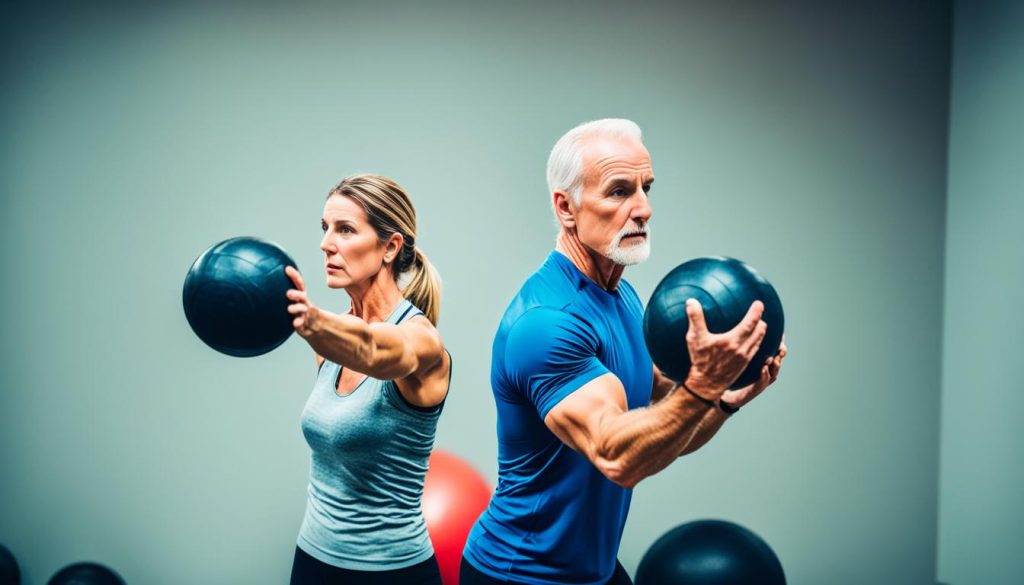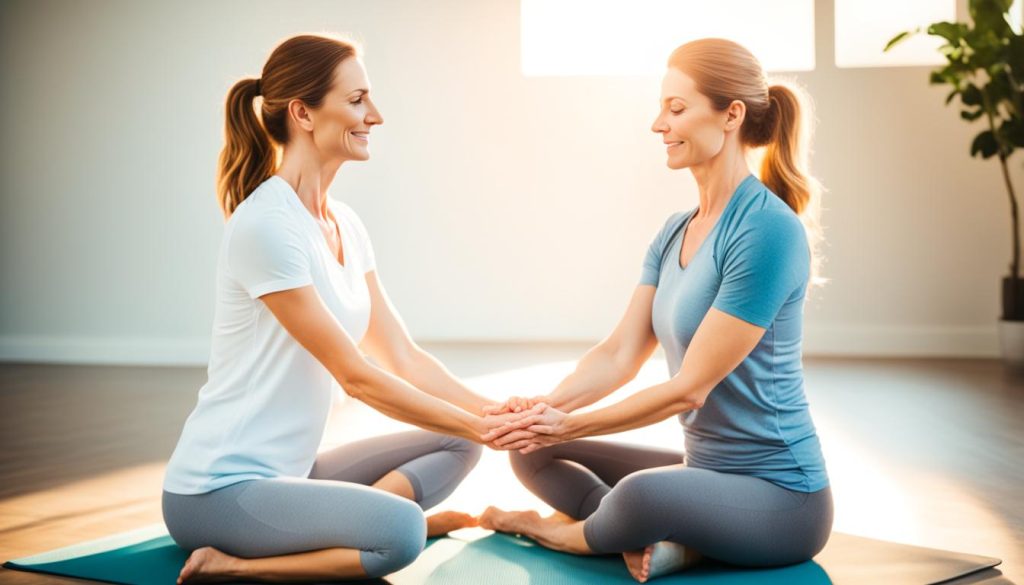As a man who has spent a decade loving a woman with a chronic illness, I understand the unique challenges and struggles that couples facing health challenges endure. My wife’s journey with endometriosis and fibromyalgia has shaped me into the man I am today, teaching me patience, empathy, and resilience. Through the ups and downs, we have found solace in sharing our experiences and advocating for her health.
During this journey, I discovered the therapeutic power of blogging, which has become an outlet for me to escape the new normal and express my thoughts and emotions. Not only has blogging allowed me to share our story with others, but it has also provided financial security for our future. With my blog, I have been able to raise awareness about chronic illnesses and connect with a community of individuals facing similar challenges.
Exercise has been a vital component of our journey together as a couple. We have explored various exercise routines and programs specifically designed for couples facing chronic illness. Finding fitness routines that accommodate our health challenges has not only improved our physical well-being but has also strengthened our bond and brought us closer together.
In this article, I will share some exercise routines and programs that couples with chronic illness can try. These couple workouts are tailored to meet the unique needs of individuals facing health challenges, ensuring that both partners can participate and benefit from the exercises. Whether you are dealing with chronic pain, fatigue, or other symptoms, these fitness routines will help you stay active while being mindful of your limitations.
Partnered Workouts for Couples
Exercising together as a couple can be a powerful way to support each other and strengthen your bond, especially when facing chronic illness. Partnered workouts offer a unique opportunity to feed off each other’s energy and work your muscles in a different way. By choosing exercises that are suitable for both partners’ strength levels, you can create a workout routine that is fun, challenging, and beneficial for your overall health and well-being.
Whether you’re dealing with chronic conditions or facing long-term illness, there are various couple-friendly exercises that you can incorporate into your workout plans. From bodyweight exercises to resistance band workouts and medicine ball exercises, there are options to suit all fitness levels and abilities. The key is to start with easier exercises and gradually increase the difficulty as you build strength and endurance.
To give you an idea of what kind of exercises you can do as a couple, here are some examples:
- Bodyweight exercises: Planks with claps, leg lifts, and burpees modified for partner work.
- Resistance band workouts: Woodchops, rows, and triceps extensions using a resistance band.
- Medicine ball exercises: Woodchops, squat to overhead press, and pass arounds with a medicine ball.
These exercises can be done at home or in a gym setting, depending on your preferences and access to equipment. The important thing is to focus on proper form, communicate with your partner throughout the workout, and have fun together.
Partnered workouts not only provide physical benefits but also emotional support and motivation to stay consistent with your fitness routine. It’s a great way to connect with your partner, share a common goal, and celebrate your achievements together. By working as a team, you can overcome challenges and maintain a positive outlook even in the face of chronic illness.
Remember, before starting any new exercise program, it’s always advisable to consult with your healthcare professionals to ensure your safety and well-being. They can provide guidance and recommendations based on your specific condition and needs.
So why not start incorporating partnered workouts into your fitness routine? Grab a mat, resistance bands, or a medicine ball, and get moving with your partner. The benefits extend beyond physical health – you’ll also create lasting memories and strengthen your relationship along the way.
Bodyweight Exercises for Couples
Working out with your partner can be a fun and engaging way to stay active together. Bodyweight exercises are a convenient and effective option for couples looking to strengthen their bodies and bond through fitness. These exercises require no equipment, making them accessible for everyone, including those facing chronic illness.
Engaging Multiple Muscle Groups
Bodyweight exercises engage multiple muscle groups simultaneously, providing a full-body workout. By performing these exercises together, you and your partner can target various muscle groups and improve overall strength and endurance.
Try incorporating the following bodyweight exercises into your partner workout routine:
- Planks with claps
- Leg lifts
- Burpees
These exercises can be modified to be performed with a partner, making them even more challenging and exciting. For example, planks with claps can be done facing each other, syncing your claps as you hold the plank position. Leg lifts can be performed while holding hands, providing stability and support for each other. Burpees can be done as synchronized movements, adding an element of fun and teamwork to your workout.
Maintaining Proper Form and Role Switching
When performing bodyweight exercises, it’s crucial to maintain proper form to prevent injuries and maximize results. Ensure that both you and your partner maintain correct alignment and technique throughout each exercise.
Additionally, for exercises that require one partner to do the work while the other provides support, such as leg lifts, it’s essential to switch roles to distribute the effort evenly. This allows both partners to benefit from the workout and prevents muscle imbalances.

Bodyweight Exercises for Couples
| Exercise | Description |
|---|---|
| Planks with claps | A partner faces you as you both hold a plank position. Simultaneously, you clap your hands, engaging your core and upper body. |
| Leg lifts | While lying on your backs, hold hands with your partner and lift your legs together, engaging your core and lower body. |
| Burpees | Perform burpees in sync with your partner, adding an element of competition and motivation. This exercise targets your entire body. |
Remember to warm up before starting any exercise routine and listen to your bodies. Modifications can be made to suit your comfort level and any specific health conditions. Enjoy the journey of working out together as a couple and the positive impact it has on your overall well-being.
Resistance Band Workouts for Couples
Resistance bands are a fantastic tool for couples facing chronic illness. They provide a convenient and effective way to strengthen and tone muscles without excessive strain on the body. Incorporating resistance band exercises into your partnered workout routine can help you both build strength, increase flexibility, and improve overall fitness.
Here are some beneficial resistance band exercises for couples:
1. Woodchops
Target Muscles: Core, back, and shoulders
Instructions: Stand side by side, feet shoulder-width apart, with the resistance band anchored at shoulder height on one side. Hold the band with both hands and twist your torso while simultaneously pulling the band across your body, ending in a diagonal position. Repeat on both sides.
2. Rows
Target Muscles: Back and biceps
Instructions: Stand facing each other, feet shoulder-width apart, with the resistance band looped securely around both partners. Each partner holds one end of the band with their palms facing each other. Keep your elbows slightly bent and pull the band towards your body, squeezing your shoulder blades together. Slowly release and repeat.
3. Triceps Extensions
Target Muscles: Triceps
Instructions: Begin by standing or sitting back-to-back with your partner. Hold one end of the resistance band with both hands positioned behind your head. While keeping your upper arms stable, extend your arms upwards until they are fully extended. Slowly return to the starting position and repeat.
Remember to start with a light or medium resistance band and gradually increase the intensity as you become stronger. It’s essential to maintain proper form throughout each exercise to maximize effectiveness and prevent injuries. Switch roles between partners for exercises that require one partner to anchor the band, ensuring both partners have an equal opportunity to engage their muscles.
Including resistance band workouts in your partnered routine can add variety and challenge to your exercise regimen. These exercises target different muscle groups and can be modified to accommodate various fitness levels and limitations. By working together, you can provide support and motivation to reach your health and fitness goals.
| Resistance Band Exercise | Target Muscles |
|---|---|
| Woodchops | Core, back, and shoulders |
| Rows | Back and biceps |
| Triceps Extensions | Triceps |
Medicine Ball Exercises for Couples
To spice up your workout routine, try incorporating medicine balls into your exercises as a couple. Medicine balls are versatile and can add a new challenge to your fitness regimen. Not only will these exercises target different muscle groups, but they will also promote coordination and teamwork between you and your partner.
Here are some effective medicine ball exercises for couples:
- Squat to Overhead Press: Start by standing facing each other, holding a medicine ball at chest level. Simultaneously lower into a squat while keeping your backs straight. As you rise back up, push the medicine ball overhead. Repeat for the desired number of reps.
- Woodchops: Stand sideways to each other with the medicine ball held with both hands at hip level on one side. Keeping your core engaged, twist your torso and lift the medicine ball diagonally across your body to the opposite side. Repeat on both sides.
- Pass Arounds: Sit facing each other with your legs extended and feet touching. Hold the medicine ball between you. Rotate your torso to one side and pass the ball to your partner, who will then rotate to the opposite side and pass it back. Continue passing the ball back and forth for the desired number of reps.
Benefits of Medicine Ball Exercises for Couples
Medicine ball exercises provide numerous benefits for couples facing chronic illness. Not only do they help improve strength, endurance, and stability, but they also enhance coordination and balance. These exercises can be modified to suit different fitness levels and can easily be incorporated into your workout routine at home or at the gym.
By engaging in medicine ball exercises together, you and your partner can encourage each other and enjoy a shared activity that promotes overall health and well-being. Remember to start with a weight that is comfortable for both of you and focus on maintaining proper form throughout each exercise.

Try these medicine ball exercises for couples and experience the benefits of working out together. Strengthen your bodies and your bond as you face the challenges of chronic illness head-on.
Benefits of Partnered Workouts for Couples Facing Chronic Illness
Partnered workouts offer several benefits for couples facing chronic illness. Exercising together can strengthen the bond between partners and provide emotional support. It can also serve as a shared activity that promotes communication and teamwork. Physical activity has been shown to improve both physical and mental health, reduce symptoms of chronic illness, and enhance overall well-being. Partnered workouts provide an opportunity for couples to support each other’s health goals and maintain a positive outlook.
Research has highlighted the following advantages of partnered workouts for couples with chronic illness:
- Increased Motivation: Exercising with a partner can provide motivation and accountability. Couples can encourage and challenge each other to reach their fitness goals.
- Enhanced Emotional Connection: Engaging in physical activity together can strengthen emotional bonds by sharing the experience and supporting each other’s journey.
- Improved Communication: Working out as a couple creates opportunities for open communication, allowing partners to discuss challenges, progress, and adjustments to the exercise routine.
- Shared Lifestyle: Partnered workouts can become a shared lifestyle choice, fostering a sense of togetherness and promoting a healthy and active lifestyle for both partners.
Fitness and Health Benefits of Partnered Workouts
Exercise offers numerous benefits for individuals with chronic illness, and when done together as a couple, these benefits can be amplified. The following are the specific exercise benefits for couples facing health challenges:
- Physical Strengthening: Engaging in regular exercise helps improve muscle strength, endurance, and flexibility, enhancing overall physical fitness and quality of life.
- Mood Enhancement: Physical activity triggers the release of endorphins, the body’s natural feel-good chemicals, leading to improved mood and reduced symptoms of anxiety and depression.
- Stress Reduction: Exercise is a powerful stress reliever and can help couples manage the stress associated with chronic illness. It provides an outlet for emotional tension and promotes relaxation.
- Increased Energy Levels: Regular physical activity boosts energy levels, reducing fatigue and increasing stamina, allowing couples to better cope with the demands of daily life.
- Disease Management: Partnered workouts can positively impact disease management by reducing the risk of comorbidities, improving cardiovascular health, and enhancing the body’s ability to manage chronic conditions.
image captures the essence of partnered workouts for couples facing chronic illness:
Considerations for Couples Facing Chronic Illness
When engaging in exercise routines, couples facing chronic illness should consider a few important factors. It’s essential to consult with healthcare professionals before starting any new exercise program. Seeking guidance from experts can ensure that the exercises you choose are safe and suitable for your specific health conditions.
Listening to your body is key. Chronic illness can vary greatly from person to person, and it’s important to modify exercises as needed to accommodate any limitations or symptoms. Pay attention to how your body feels during and after exercise, and make adjustments accordingly.
- Begin slowly and gradually increase your intensity
- Choose exercises that you enjoy and that are appropriate for your fitness level and abilities
- Take breaks and rest when needed
Nutrition and hydration are also important considerations. Proper fueling and hydration can support your physical activity, help you maintain your energy levels, and promote overall well-being. Make sure to consume a balanced diet and drink enough water throughout the day.
In addition to physical factors, communication with your partner is crucial. Share your needs, limitations, and concerns openly and honestly. This will help both of you understand each other’s boundaries and work together to create a safe and enjoyable workout experience.

Tips for Couples with Chronic Health Issues
To ensure a successful exercise journey as a couple facing chronic illness, here are a few tips:
- Set realistic goals: Start with small, achievable goals, and celebrate each milestone along the way. This will help you stay motivated and maintain a positive mindset.
- Support each other: Encourage and uplift your partner during workouts. Your support can make a significant difference in their confidence and progress.
- Track your progress: Keep a workout journal or use a fitness app to document your exercises, reps, and sets. Tracking your progress will give you a sense of accomplishment and provide motivation to continue.
- Be flexible: Understand that some days may be more challenging than others. Be flexible with your workout schedule and modify exercises if needed.
- Find joy in the journey: Focus on the positive aspects of exercising together. Celebrate the time spent bonding, supporting each other, and improving your overall health and well-being as a couple.
| Considerations for Couples Facing Chronic Illness | Tips for Couples with Chronic Health Issues |
|---|---|
|
|
Walking and Outdoor Activities for Couples
When it comes to exercise routines for couples facing chronic illness, walking and outdoor activities are highly recommended. Both options offer numerous benefits for physical and mental well-being, providing an enjoyable and accessible way to stay active as a couple.
Walking is a low-impact exercise that can be tailored to suit the fitness levels and abilities of both partners. It offers cardiovascular benefits without putting excessive strain on the body. Whether you prefer a leisurely stroll or a brisk power walk, this activity can be easily modified to accommodate your needs and limitations.
Engaging in outdoor activities like hiking, biking, or swimming can also be a fantastic choice for couples with chronic illness. These activities provide an opportunity for couples to connect with each other and nature while enjoying a change of scenery. Outdoor activities can offer a sense of adventure and exploration, adding variety and excitement to your exercise routine.
Being surrounded by nature and breathing in fresh air can have a positive impact on mental health and overall well-being. Studies have shown that spending time outdoors can reduce stress, improve mood, and increase feelings of happiness and well-being.
So, lace-up your walking shoes, grab your partner’s hand, and take advantage of the many benefits that walking and outdoor activities can offer your relationship and health.
Benefits of Walking and Outdoor Activities:
- Improves cardiovascular health
- Boosts mood and reduces stress
- Enhances mental well-being
- Strengthens the bond between partners
- Provides a change of scenery
- Increases feelings of happiness and positivity
Comparison of Walking and Outdoor Activities
| Walking | Outdoor Activities |
|---|---|
| Low-impact exercise | Variety of options available |
| Easily modifiable for different fitness levels | Opportunity for adventure and exploration |
| Accessible and convenient | Connection with nature and fresh air |
| Cardiovascular benefits | Improved mood and reduced stress |
| Opportunity for quality time with your partner | Increased feelings of happiness and well-being |
Yoga and Stretching for Couples
Yoga and stretching exercises can be a gentle yet effective way for couples facing chronic illness to improve their well-being and enhance their physical and mental health. Partner yoga poses and stretching routines offer numerous benefits, including improved flexibility, balance, and relaxation. By incorporating these exercises into your routine, you can alleviate muscle tension, enhance mobility, and foster a deeper connection with your partner.
Partner Yoga Poses
Partner yoga poses are a wonderful way to strengthen the bond between you and your partner while reaping the benefits of yoga. These poses involve shared movements and supportive touch, allowing for improved body awareness, trust, and communication. Here are a few partner yoga poses you can try:
- Double Tree Pose: Stand side by side and interlace your arms at the elbows. Balance on one leg, with the opposite foot resting against the inner thigh of your partner’s leg. Find your balance and breathe deeply together. Switch sides and repeat.
- Seated Forward Fold with Shoulder Stretch: Sit facing each other, legs extended. Reach forward and hold each other’s forearms. Gently fold forward, keeping your backs straight, and feel the stretch in your hamstrings and shoulders. Breathe deeply and hold the stretch for a few breaths.
- Partner Child’s Pose: Sit on your heels and allow your partner to sit on your lower back, facing away from you. By gently leaning forward, you will provide a comforting stretch to your partner’s lower back. Communicate to ensure a comfortable stretch for both partners.

Stretching Routines
Stretching is vital for maintaining flexibility, relieving muscle tension, and improving joint mobility. When performing stretching exercises as a couple, it’s essential to choose stretches that suit both partners’ abilities and address any physical limitations. Here are a few stretching exercises you can incorporate into your routine:
- Seated Side Stretch: Sit facing each other with your legs extended. Reach your arms overhead, hold hands with your partner, and gently lean to one side, feeling the stretch along your torso and side. Repeat on the other side.
- Partner Seated Forward Fold: Sit facing each other with your legs extended. Extend your arms forward and hold hands with your partner. Gently fold forward, maintaining a straight back, and feel the stretch in your hamstrings and lower back.
- Quad Stretch: Stand facing each other. Hold onto your partner’s shoulders for balance and gently lift one foot towards your buttocks, holding onto the ankle. Feel the stretch in the front of your thigh. Switch sides and repeat.
- Partner Seated Spinal Twist: Sit back to back with your partner, legs crossed. Reach your right arm behind you and place your palm on your partner’s knee. Hold onto your partner’s left knee with your left hand. Gently twist your torso to the right, feeling the stretch in your spine. Switch sides and repeat.
Remember to prioritize safety, listen to your bodies, and modify these poses and stretches as necessary to accommodate any physical limitations or discomfort. Breathe deeply throughout the exercises to enhance relaxation and mindfulness.
Mindfulness and Meditation for Couples
Mindfulness and meditation practices can be incredibly beneficial for couples facing chronic illness. These practices help promote relaxation, reduce stress, and enhance mental well-being. By practicing mindfulness exercises together, such as guided meditations or deep breathing exercises, couples can cultivate a sense of presence and connect on a deeper level. Mindfulness allows partners to be fully engaged in the present moment, fostering a greater understanding and compassion for one another.
The benefits of mindfulness for couples dealing with chronic illness are numerous. By incorporating mindfulness practices into their daily routines, couples can:
- Improve emotional resilience: Mindfulness helps couples manage anxiety and improve emotional well-being, allowing them to better navigate the challenges of living with chronic illness.
- Deepen their connection: Mindfulness exercises provide an opportunity for couples to connect on a deeper level, fostering a sense of unity and understanding.
- Reduce conflict: By practicing mindfulness, couples can develop greater self-awareness and learn to approach difficult situations with more compassion and understanding.
- Enhance overall well-being: Mindfulness practices have been shown to improve overall mental health, reduce symptoms of depression and anxiety, and enhance overall well-being.
To incorporate mindfulness and meditation into your daily routine as a couple, consider the following exercises:
Guided Meditation:
Find a quiet and comfortable space where you can sit together. Close your eyes, take deep breaths, and listen to a guided meditation recording or app. Allow yourselves to fully immerse in the experience and let go of any thoughts or worries.
Deep Breathing Exercises:
Sit facing each other, close your eyes, and place your hands on your partner’s chest. Take slow, deep breaths together, feeling the rise and fall of each breath. This synchronized breathing can create a sense of calm and unity.
Mindful Walking:
Go for a walk together and pay attention to your surroundings. Notice the sensations in your body, the sounds around you, and the beauty of nature. This mindful walk can help you relax, rejuvenate, and connect with each other.
Gratitude Practice:
Sit together and take turns expressing gratitude for each other and the positive aspects of your lives. This practice can cultivate a sense of appreciation and positivity within your relationship.
Remember, mindfulness and meditation are highly personal practices, so it’s important to find what works best for you and your partner. Experiment with different techniques and make it a regular part of your routine. By incorporating mindfulness into your daily lives, you can strengthen your bond, reduce stress, and enhance your overall well-being as a couple.
Celebrating Progress and Maintaining Motivation
When you and your partner are exercising together while facing chronic illness, celebrating progress and maintaining motivation become crucial factors for your fitness journey. One way to stay motivated is by setting realistic goals and acknowledging the small achievements along the way. By focusing on attainable targets, you can maintain a positive mindset and find renewed motivation to keep going.
A workout journal can be a valuable tool in tracking your progress and staying motivated. By documenting your exercise routines, jotting down your accomplishments, and noting how you feel after each workout, you can visualize your progress and appreciate the strides you’ve made. Looking back at your earlier entries can serve as a reminder of how far you’ve come and ignite a sense of pride and determination.
Support and encouragement from your partner are vital for staying motivated as a couple. Throughout your fitness journey, be each other’s cheerleaders, providing words of affirmation, and celebrating milestones together. By fostering a supportive environment, you can boost each other’s confidence and cultivate a sense of unity and strength. Remember, you are not alone on this journey, and together, you can overcome any challenges that come your way.
In addition to celebrating progress, remember to prioritize self-care. Taking care of yourselves physically and emotionally is essential for maintaining motivation in the long run. Set aside time for relaxation, indulge in activities that bring you joy, and practice self-compassion. By prioritizing self-care, you can replenish your energy levels, reduce stress, and ensure a sustainable approach to your fitness journey.
